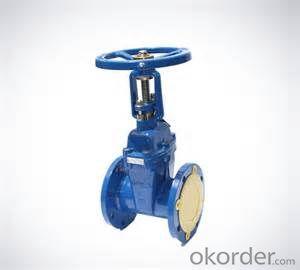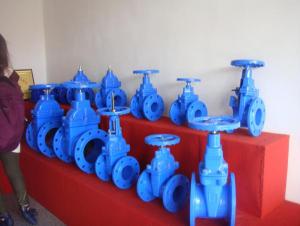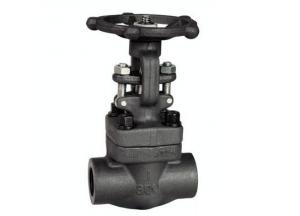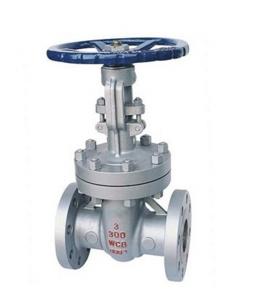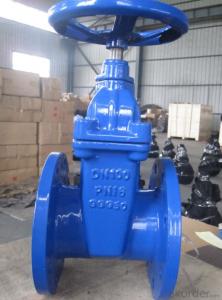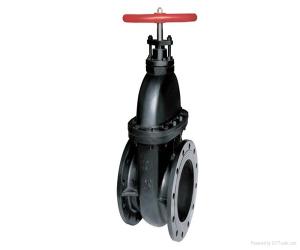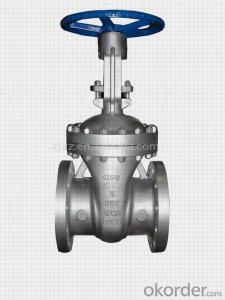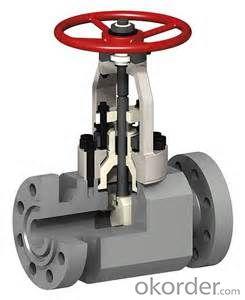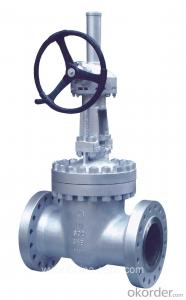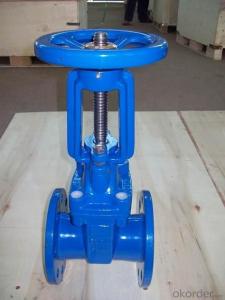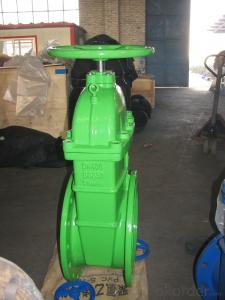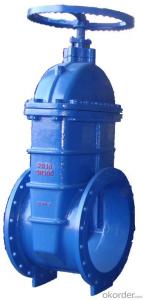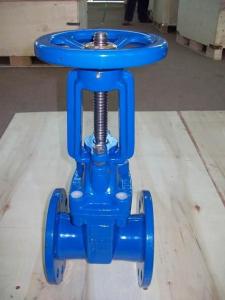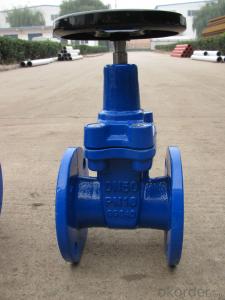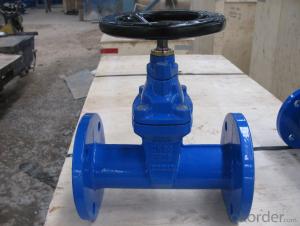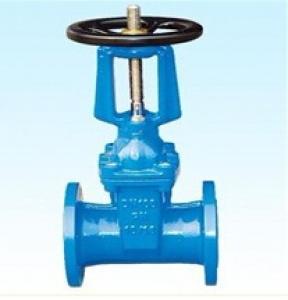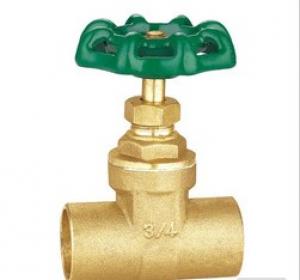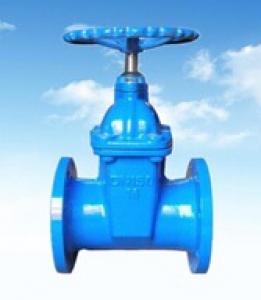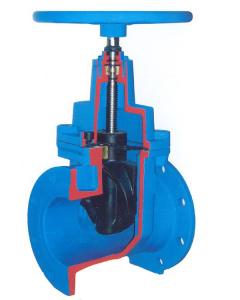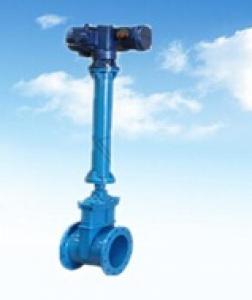Gate Valve BS Resilient Seated gate valve, PN16 Rising Stem
- Loading Port:
- Tianjin
- Payment Terms:
- TT OR LC
- Min Order Qty:
- 200 kg
- Supply Capability:
- 10000 kg/month
OKorder Service Pledge
OKorder Financial Service
You Might Also Like
1.Structure of Gate Valve Description:
A gate valve, also known as a sluice valve, is a valve that opens by lifting a round or rectangular gate/wedge out of the path of the fluid. The distinct feature of a gate valve is the sealing surfaces between the gate and seats are planar, so gate valves are often used when a straight-line flow of fluid and minimum restriction is desired. The gate faces can form a wedge shape or they can be parallel. Gate valves are primarily used to permit or prevent the flow of liquids, but typical gate valves shouldn't be used for regulating flow, unless they are specifically designed for that purpose. Because of their ability to cut through liquids, gate valves are often used in the petroleum industry. For extremely thick fluids, a specialty valve often known as a knife valve is used to cut through the liquid. On opening the gate valve, the flow path is enlarged in a highly nonlinear manner with respect to percent of opening. This means that flow rate does not change evenly with stem travel. Also, a partially open gate disk tends to vibrate from the fluid flow. Most of the flow change occurs near shutoff with a relatively high fluid velocity causing disk and seat wear and eventual leakage if used to regulate flow. Typical gate valves are designed to be fully opened or closed.When fully open, the typical gate valve has no obstruction in the flow path, resulting in very low friction loss.
2. Main Features of the Gate Valve:
• Valve body cavity using non-toxic epoxy resin,both inside and outside flashboard completely is coated with rubber
• Free of water pollution
• High manufacturing accuracy
• High strength
• Environmental protection and energy saving
• Good visual effect
3. Images
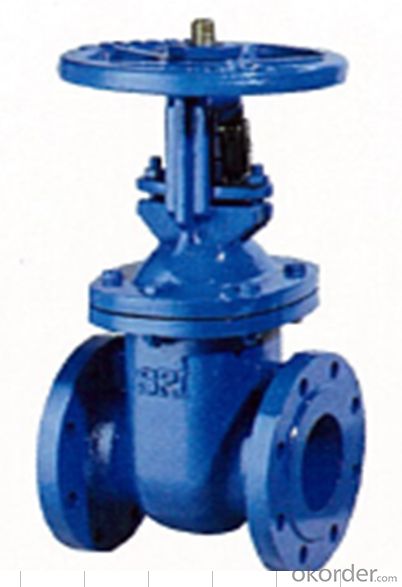
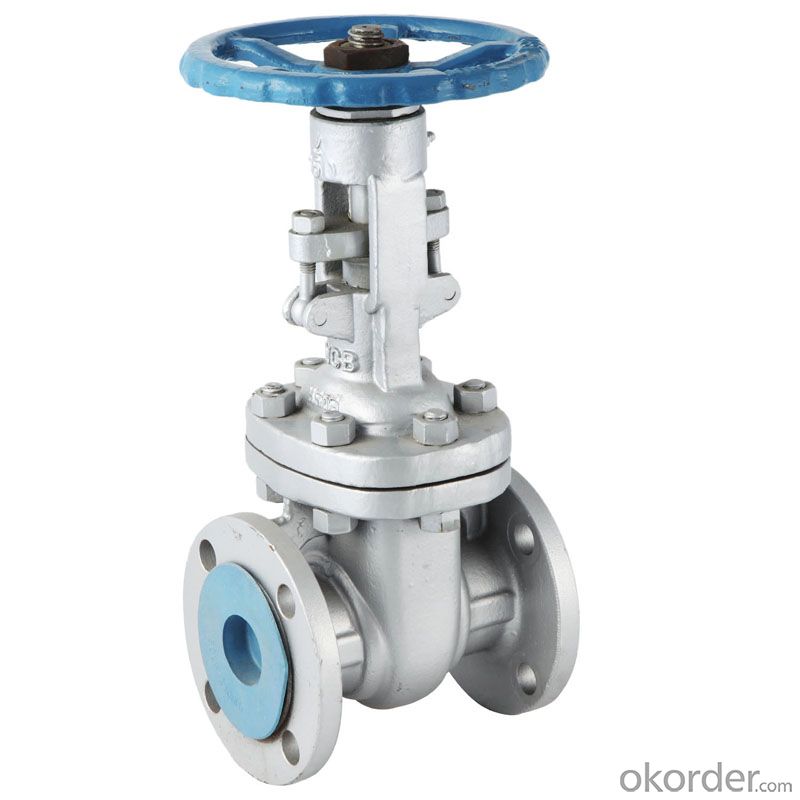
4. Gate valve Specification
1) Size: DN15 - 1, 000mm;
2) Class: PN1.0 - 16.0Mpa;
3) Material: WCB,WCC,WC6,WC9,304,316,CF8,CF3,CF8M,CF3M 4) Standards: API600 API602 API603 API6D
A) Design and manufacture: DIN3352;
B) Face to face dimensions: DIN3202;
C) End flange dimensions: DIN2543-2551;
D) Inspection and test DIN3230.
5.FAQ
1. What's are the characteristics of gate valve?
The distinct feature of a gate valve is the sealing surfaces between the gate and seats are planar, so gate valves are often used when a straight-line flow of fluid and minimum restriction is desired. The gate faces can form a wedge shape or they can be parallel.
2. What is the work principle of gate valve ?
The gate faces can form a wedge shape or they can be parallel. Gate valves are primarily used to permit or prevent the flow of liquids, but typical gate valves shouldn't be used for regulating flow, unless they are specifically designed for that purpose. Because of their ability to cut through liquids, gate valves are often used in the petroleum industry.
3. What is the structure?
Bonnets provide leakproof closure for the valve body. Gate valves may have a screw-in, union, or bolted bonnet. Screw-in bonnet is the simplest, offering a durable, pressure-tight seal. Union bonnet is suitable for applications requiring frequent inspection and cleaning. It also gives the body added strength. Bolted bonnet is used for larger valves and higher pressure applications.
- Q: What are the working principles of the electric gate valve?
- We see you what type of electric valve, is integral or ordinary type, if the overall type Denso took power on the line, is generally 380V and 220V power supply, and then according to their own needs and then open the signal line, in place and closing in place and remote control line, valve position feedback signal the commonly used 4~20ma over torque protection fault signal.
- Q: What are the specifications of the gate valves? Does the work pressure need to be marked separately?
- 5- dark pole single wedge gate valve, 6- dark bar wedge gate valve 7-, dark bar parallel gate valve, parallel gate valve 9- dark bar;5, sealing materials or lining materials were used R- T- austenitic stainless steel, copper alloy, X- rubber, S- plastic, N- nylon, F- fluorine plastic, H-Cr series stainless steel, hard alloy Y-, J- rubber, M- Monel alloy, Tc- ceramics;6, the body material code Z- K- gray cast iron, malleable cast iron, Q- ductile iron, copper and T- alloy, C- steel, P- chromium nickel stainless steel, R- stainless steel chromium nickel molybdenum, chromium molybdenum vanadium steel V-.For example: electric, flanged, rod wedge gate valve, sealing surface material by direct processing, nominal pressure PN0.1MPa of the valve body is made of grey cast iron gate valve: Z942W-1 electric wedge gate valve.
- Q: Why can't the pressure measuring point be set at the two ends of the gate valve when measuring the resistance loss of the gate valve?
- Because of the unsteady flow of fluid near the inlet and outlet of the valve, the measured data cannot be obtained relatively accurately.
- Q: How to distinguish between gate valve and cut-off valve?
- The shape is relatively simple and the casting process is better.The valve is used in the system is relatively large, to close the gate off system; and the valve is used in the system is relatively small, and to adjust the flow quantity of the system, can not be closed gate and globe valves of different specifications for many kinds of occasions, the valve rod valve the dark bar gate valve, wedge gate valve, single valve, multi valve valve body structure is different, large volume. Generally large and nominal caliber DN50 mostly with gate valve, especially industrial high temperature, high pressure, highly toxic and so on.Stop valve is able to stop and adjust flow, small footprint, small size, generally less than the nominal diameter, DN50 occasions use it.
- Q: Z41T one 10 gate valve and Z44T one, 10 gate valve difference
- Z41T one, 10 is single gate, Z44T one, 10 is double gateAccording to the provisions of the JB/T 308-2004 valve type programming method:Z== gate valve4== connection: flange type1== structure: Rigid single gate4== structure: Rigid double gateT== sealing surface material: copper alloy10== pressure rating: 1.0MPa
- Q: Stainless steel gate valve DN150 200300 weight, who knows?
- It depends on different materials and pressure levels. 304 material, high pressure weight will be much heavier.
- Q: Does the tap belong to a stop valve or a gate valve?
- If it is about to pull open and close, it is cock valveIf it is rotated up and down, it is a stop valve
- Q: What is the size and length of the DN80 gate valve? 10 kg and 16 kg, respectively?
- Valve structure length standards are PN16, short series for 203mm, long series for 280mm, flange size by PN16.
- Q: Is the axial force and torque of the wedge gate valve the same?
- The sealing performance is good, the gate valve is not easy to be jammed when heated, and is suitable for the parts with frequent switches. B is suitable for steam, high temperature oil and gas medium. C is not suitable for easy coking medium.
- Q: Gate valve z41t what does that mean?
- According to the provisions of the JB/T 308-2004 valve type programming method:Z = gate valve4 = connection form: flangeT = sealing surface material: copper alloy
Send your message to us
Gate Valve BS Resilient Seated gate valve, PN16 Rising Stem
- Loading Port:
- Tianjin
- Payment Terms:
- TT OR LC
- Min Order Qty:
- 200 kg
- Supply Capability:
- 10000 kg/month
OKorder Service Pledge
OKorder Financial Service
Similar products
Hot products
Hot Searches
Related keywords
